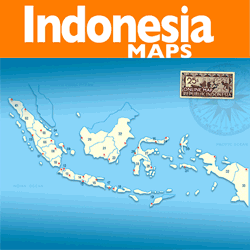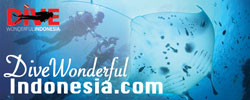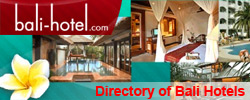Togean Island

Spread over a 90 km stretch in the middle of Tomini Bay, the winding, hilly coastlines and equatorial waters of the Togean Islands cast a magical spell of green, yellow and blue, in all the shades imaginable. The Togean or Togian Islands are an archipelago of 56 islands and islets, in the Gulf of Tomini, off the coast of Central Sulawesi, in Indonesia. The three largest islands are Batudaka, Togian, and Talatakoh. There are 37 villages on the islands.
The dark green of the islands and the crystal clear water is a perfect setting and has attracted many travelers during the last years. Travelers endure the long journey in search of the mythical beach paradise – many stay longer than they expected. Lazy days sunbathing, beachcombing, diving and snorkeling, exploring the dense jungle interiors – the simple lifestyle can be so alluring.
Lying in the deep water basin and protected on all sides by the spidery arms of Sulawesi, and miles from anywhere, the calm and clear waters are full of marine life, and the beaches are clean and undisturbed. Togean is formed by volcanic activity; the islands are covered by rainforest and surrounded by coral reef formations, which provide habitat and breeding areas for hawksbill turtle, Green Turtle and the Dugong. The Tonkean Macaque is found in the islands’ forests. The Togian Hawk-owl, discovered in 1999, is endemic to the islands. The Togian White-eye, another endemic bird species, was described in 2008.
Most visitors consider the main attraction of the Togean Islands to be doing just nothing but lazing on the many golden beaches here at Kadidiri. More than likely, you can have the whole beach to yourself. If you do tire of that particular activity then you can explore Kadidiri.
Trekking round the back of the island you can find tarsiers, wild boar and deer, babirusa, fruit bats and coconut crabs – the largest of all land-living crabs, can weigh up to 5 kilogrammes and span almost 1 metre, now clinging precariously to existence on only a handful of islands in Asia and the Pacific. Borrow one the the sea canoes and head to the west side of the island to find a Bajau village. Alternatively, you could try your hand at cliff climbing.
There are only about 25,000 people in total in the Togians. The people are mainly Muslim Minahasans from Gorontalo, but also the eruption on Una Una in 1983 brought refugees from that island. Interesting ethnic groups indigenous to Tomini Bay are the Bajau, or Sea Gypsies. The Bajau number some 2,000 people and adopt a rather secretive, nomadic existence entirely at sea.
They live in wooden shacks built on stilts on top of the coral reefs. They move from home to home by dugout canoe and exist by subsistence fishing and selling sea cucumbers to the chinese markets. The Bajau practice breath holds diving and use only goggles and spears for hunting. Most of the population lives on the main island settlements in small fishing communities on Dolong, Togean and Batudaka.
The only means of transportation between the Togean Islands is by boat. Public boats run between the main islands every day. Aside from public transport, the only option is to charter one of the inexpensive local boats. There are no roads of any meaning on any of the islands, so to get around on land, it’s the old fashioned mode of transport, walking. Let’s have fun walking.

A Serene and Beautiful Limboto Lake in Gorontalo
Sulawesi Island always has something interesting for tourists. For example, in Gorontalo Province, there is the famous Limboto Lake, which is suitable for numerous activities like fishing, boat riding, photography, sightseeing, and much more! As the name suggests, the lake resides in Limboto Sub-District and has become one of the prime tourist sites in that region. The lake has some unique features, as well. For instance, it connects directly to the sea! Not to mention it becomes the habitat of numerous birds and fishes. According to the locals, the lake…
Saronde Island, Gorontalo
Saronde is a small Island that located near to the Gulf Kwandang, North Gorontalo District. Although this tiny, the charm of the Island is internationally well-known. There are many foreign tourists that come to this Island during peak season. Seronde Island is still very natural, clean, and away from air pollution. The nature is very soothing and ready to indulge you. Here, you can swim, surf, dive, snorkel or water ski as much as you want. Just do not hesitate yourself to jump and swim, because the water is fine…
Cinta Island, Tomini Bay, Gorontalo
Pulau Cinta or love Island is become more popular today in Gorontalo, since it been promoted in Festival Sail Tomini Boalemo few years ago. Are you a newlywed and want to have perfect escape with your spouse? Then, celebrating your love together at this Island will be your best experience. Looking at the name that indicated the Love, the form of the Island is also unique, with a heart shape characterizing Love sign. Cinta Island is located in Boalemo district, Gorontalo, approximately 2 hours drive from the city of Gorontalo.…
Olele Marine Park, The Gorontalo’s Hidden Paradise
Better known as Gorontalo’s hidden paradise, Olele marine park is one of magnificent tourism objects in Gorontalo. It located in Olele village, Kabila Bone sub-district, Gorontalo. There are just so many things that make Gorontalo perfect for holiday, the beauty of its nature, the culture and not forget to mention, the friendly people. Mountains, hills, shore line are the main characteristic of Gorontalo and it makes the island perfect for marine tourism. To reach Olele, it only takes 20 km from downtown Gorontalo. We can take 40-50 minute driving to…









